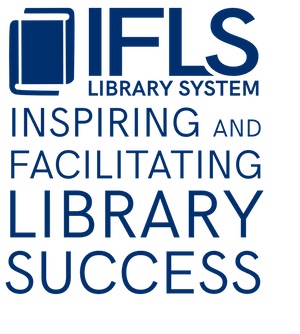NOTE: This blog post was written by Nicole Witt, Youth Services Coordinator at D.R. Moon Library-Stanley, based what she learned from the UW Madison iSchool’s Continuing Education course Sustainably Grow Your Summer Library Program. Nicole was able to attend this online course thanks to a scholarship from IFLS, made possible with a grant from the Wisconsin Department of Public Instruction and funded by a grant from the Institute for Museum and Library Services. Thanks for sharing Nicole!
From Vision to Action: Integrating Sustainability in Libraries
While enrolled in “Sustainably Grow your Summer Library Program” through UW-Madison iSchool Continuing Education the instructor Dawn Tevis used lecture videos as well as countless articles to share the importance of using sustainability practices to grow the summer library programs and offering new programs that benefit the community and add value for the patrons.
During the first online class it was discussed that “Sustainability is the practice of avoiding the depletion of natural resources to maintain an ecological balance.” Within the library world, we have a unique opportunity to contribute to sustainability by ensuring our operations are environmentally responsible, socially equitable, and financially feasible. When all three of these elements come together in perfect harmony, they create what is known as the Triple Bottom Line.
The Triple Bottom Line in Library Operations
Libraries serve as cornerstones of their communities, offering valuable resources and programming that enrich the lives of patrons. By integrating sustainability principles into our work, we can maximize our impact while being mindful of environmental and social responsibilities.
- Environmental Responsibility: Libraries can reduce waste, conserve energy, and implement eco-friendly policies, such as paperless communication.
- Social Equity: Libraries serve as inclusive spaces, providing access to resources, technology, and learning opportunities for all community members, regardless of background or socioeconomic status.
- Financial Feasibility: Thoughtful budgeting and resource allocation ensure that sustainable initiatives remain within the budget while offering programs that are meaningful to the community.
Tapping into Community Resources for Sustainability
Sustainability also includes tapping into community resources to enhance library programming and services. Utilizing asset mapping helps libraries get to know the people, places, and organizations that surround them. By identifying underutilized community assets and understanding how patrons spend their time, libraries can gain valuable insights into what programs would be most beneficial. Collaborating with local businesses, schools, nonprofits, and cultural organizations can create mutually beneficial partnerships, expand access to resources, and strengthen community ties.
The Importance of the “Why” in Library Programming
When planning library programs, it is essential to consider the deeper purpose behind each initiative. Understanding the “why” not only strengthens program effectiveness but also aligns it with broader library goals.
Some key motivations behind library programs include:
- Advancing the mission and vision of the library
- Improving literacy rates within the community
- Combating the summer slide in young readers
- Expanding access to library resources and services
- Fostering curiosity and lifelong learning
- Building relationships among patrons and staff
Recording Goals and Measuring Impact
Documenting the purpose behind a program and setting measurable goals ensures accountability and long-term success. Clear objectives help guide programming decisions, secure funding, and demonstrate the impact of library services to stakeholders.
For instance, if a library’s goal is to reduce the summer slide among young readers, a structured summer reading program with measurable participation rates and progress tracking can provide tangible proof of success.
Conclusion
Sustainability in libraries is about more than just environmental conservation, it’s about creating a balanced approach that includes ecological, social, and financial factors. By integrating sustainability into library programming and clearly defining the “why” behind our initiatives, we can foster resilient, thriving communities while ensuring that our physical buildings, our legacies as a pillar in the community last for many generations. Recording these goals and measuring their outcomes helps libraries stay focused on meaningful, impactful work.
Libraries are uniquely positioned to lead by example, demonstrating that sustainability and purpose-driven programming can go hand in hand to create lasting benefits for individuals and communities alike.
